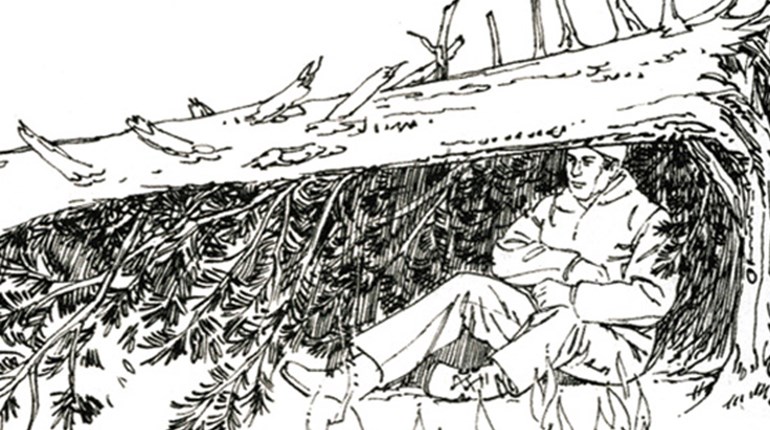
It is of vital importance to stay warm when lost or stranded. Your shelter should protect you from the wind and cold and keep you dry to prevent loss of body heat. Select a protected spot for your shelter that will allow you to build a fire in front of it. A cave, rock outcrop or fallen tree will provide shelter for the night. If it isn't sufficiently sheltered, use whatever is at hand to make it better. Here are some shelter ideas that won't cost you too much valuable energy to create.
Fallen Tree Shelter
The quickest and easiest form of shelter is one made from a fallen tree that has ample space between the trunk and the ground. Usually you can cut away some of the branches and lean them against the trunk to form a crude type of roof, but be careful not to cut off any of the limbs underneath that may be supporting the tree.
Lean-To Shelter
This is one of the easiest shelters to build. A bed made of boughs about eight inches deep will provide good insulation from the cold ground. Place boughs in rows with the butt ends toward the ground.
Snow Cave Shelter
Snow caves are difficult to dig without getting wet. For this reason, they are less desirable than other types of shelter. However, snow is a good insulating material that can keep you warm in a survival situation.
A snow cave should be deep enough to sit in. When shaping a snow cave, arch the roof inside so moisture from melting snow will run down the sides of the cave and not drip on you. Do not make the cave's roof exceptionally thick. The cave should be shallow enough and the roof thin enough so you can break through the snow and stand up if a cave-in should occur.
Punch a ventilation hole in the roof. Keep it open by ramming a stick through it occasionally. It is very important to clear drifting or blowing snow from the vent so fresh air keeps circulating within the cave. Chop a roomy bench or sleeping shelf at least one foot above the cave entrance and cover it with tree branches.




































